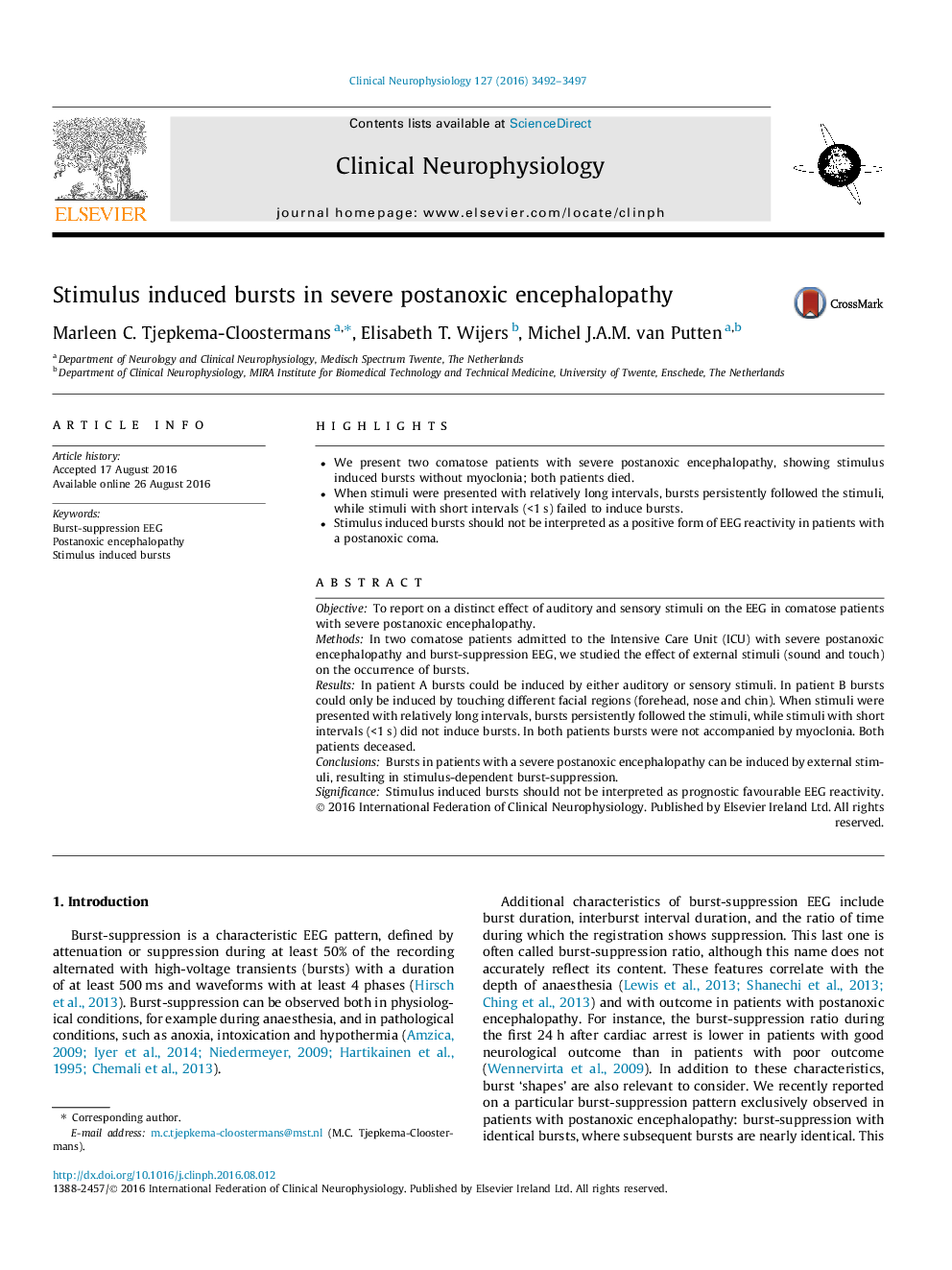| Article ID | Journal | Published Year | Pages | File Type |
|---|---|---|---|---|
| 5627573 | Clinical Neurophysiology | 2016 | 6 Pages |
â¢We present two comatose patients with severe postanoxic encephalopathy, showing stimulus induced bursts without myoclonia; both patients died.â¢When stimuli were presented with relatively long intervals, bursts persistently followed the stimuli, while stimuli with short intervals (<1 s) failed to induce bursts.â¢Stimulus induced bursts should not be interpreted as a positive form of EEG reactivity in patients with a postanoxic coma.
ObjectiveTo report on a distinct effect of auditory and sensory stimuli on the EEG in comatose patients with severe postanoxic encephalopathy.MethodsIn two comatose patients admitted to the Intensive Care Unit (ICU) with severe postanoxic encephalopathy and burst-suppression EEG, we studied the effect of external stimuli (sound and touch) on the occurrence of bursts.ResultsIn patient A bursts could be induced by either auditory or sensory stimuli. In patient B bursts could only be induced by touching different facial regions (forehead, nose and chin). When stimuli were presented with relatively long intervals, bursts persistently followed the stimuli, while stimuli with short intervals (<1Â s) did not induce bursts. In both patients bursts were not accompanied by myoclonia. Both patients deceased.ConclusionsBursts in patients with a severe postanoxic encephalopathy can be induced by external stimuli, resulting in stimulus-dependent burst-suppression.SignificanceStimulus induced bursts should not be interpreted as prognostic favourable EEG reactivity.
